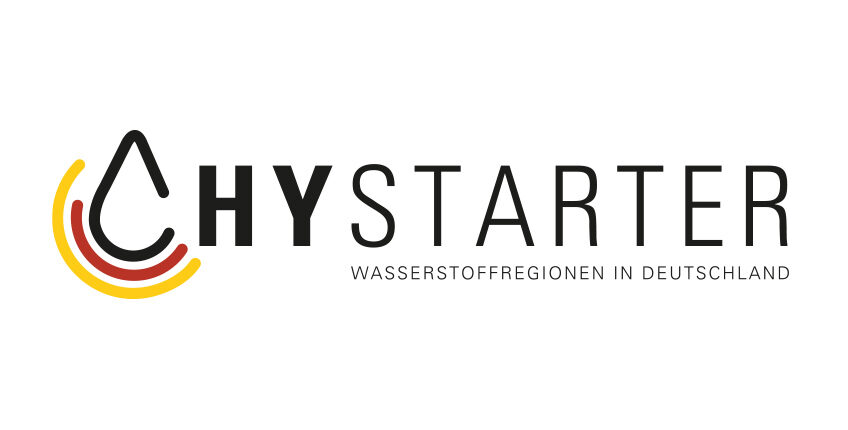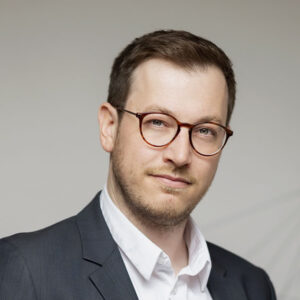It’s the beginning of an new era in Bendorf: On 4 May, the city took its first step on the road to a regional hydrogen strategy with its first information event for interested citizens, commercial partners, municipal entities, trade associations, and scientific and political representatives.
As a winning region in the ‘HyLand hydrogen regions in Germany’ competition organised by the Federal Ministry for Digital and Transport, Bendorf will receive one year of technical and organisational support in the HyStarter II category for developing a hydrogen concept tailored to the region and for the formation of a network for local hydrogen stakeholders.
Over the course of the launch event in the Krupp’schen hall at Sayner Hütte, the HyStarter project and potential key priorities were presented to the approx. 80 guests. It became quickly clear that both expectations as well as motivation are running high all round.
Mayor Christoph Mohr addressed the devastating effects of climate change and emphasised the need for further structural transition: “We are proud of our Bendorf economy, proud of our Rhine port and its industries. Two of the key industries here are the building material and the petroleum industries and we know that the fossil fuels age is already ending.” The mayor said that Russian war of aggression comes on top of this, which shows that dependency on fossil fuels can no longer guarantee security of supply. It is also possible at local level, he added, to contribute to maintaining our livelihood with innovative ideas and technical solutions.
“The development of a hydrogen strategy for Bendorf and the region is an example of the transformation process, because we see real development potential for Bendorf in an area that can make a significant contribution to climate protection”, underlined Mayor Mohr.
District Administrator Dr. Alexander Saftig congratulated the town of Bendorf on its success in the HyLand competition and also underlined the necessity of fighting climate change. The district of Mayen-Koblenz is also convinced by the potential of hydrogen, he added, and would like to support Bendorf’s efforts: “For creative, value-adding working processes, the district is always on board.”
Werner Prümm, Head of the Department for Urban Development, Construction, Economy and Culture, gave an insight into the first concepts for Bendorf. These included for example climate-neutral energy provision and the development of decentralised infrastructure for the production of hydrogen from renewable energies. The Bendorf port plays and important role here. Because the demand for fossil fuels will decline over the coming years, the conversion of the facility to a H2 trans-shipment centre offers a promising perspective. The development of a cross-regional innovation and knowledge location is also a priority. The first pilot project could be a hydrogen refuelling station in Bendorf. Haulier Andreas Normann is collaborating with the company GP Joule.
SmartQuart is a success story from the region, a ‘real laboratory of the energy transition’. Mayor of the municipal association Albert Jung was invited to Sayn and presented the project in more depth. In Kaiseresch, hydrogen is produced from locally produced power generated from wind and solar energy. This so-called green hydrogen is produced by an electrolyser and is made safe for storage with LOHCs (liquid organic hydrogen carriers). This means the hydrogen is not combustible and can be safely transported. The green hydrogen can be used by businesses. Route 713 between Cochem and Kaiseresch is also serviced by a hydrogen-powered bus (public transport). The excess hydrogen is stored and made transportable. “The entire project is about maximising added value for the region“, emphasized Mayor Albert Jung.
During a concluding podium discussion, he recommended to his colleague Christoph Mohr and other municipalities interested in the topic of hydrogen, to create their own production capacities and exploit potential in the field of generation e.g. via wind power or photovoltaics. Acceptance on the part of the public is currently higher than ever, he added.
Rita Emde from the Mittelrhein business development agency is convinced that the whole of the region can benefit from the Bendorf project and, like District Administrator Dr. Saftig, pledged the support of the district.
Haulier Andreas Normann has already been pondering whether to covert his entire truck fleet to hydrogen power for some time. Compared to electric mobility, he is convinced above all by the fact that hydrogen can be manufactured in a 100% ‘green’ manner.
Mayor Christoph Mohr is ready to take the risk of counting on hydrogen, even when its profitability is not yet necessarily a given. The consequences of climate change are generating high costs as well, underscored the Mayor: “Hydrogen is CO₂ neutral and can make an important contribution to achieving climate neutrality. We’re talking here about an investment in the future“. The discussion was moderated by Nadine Hölzinger from Spilett new technologies GmbH, who are supporting the process in terms of content.
She was also there on 5 May, when a closed circle of experts came together for an initial strategy dialogue in the Ideenkino in order to examine the ideas in more detail. A total of six workshops and other bilateral talks are planned. The regional hydrogen concept is to be completed by the end of April 2023.


